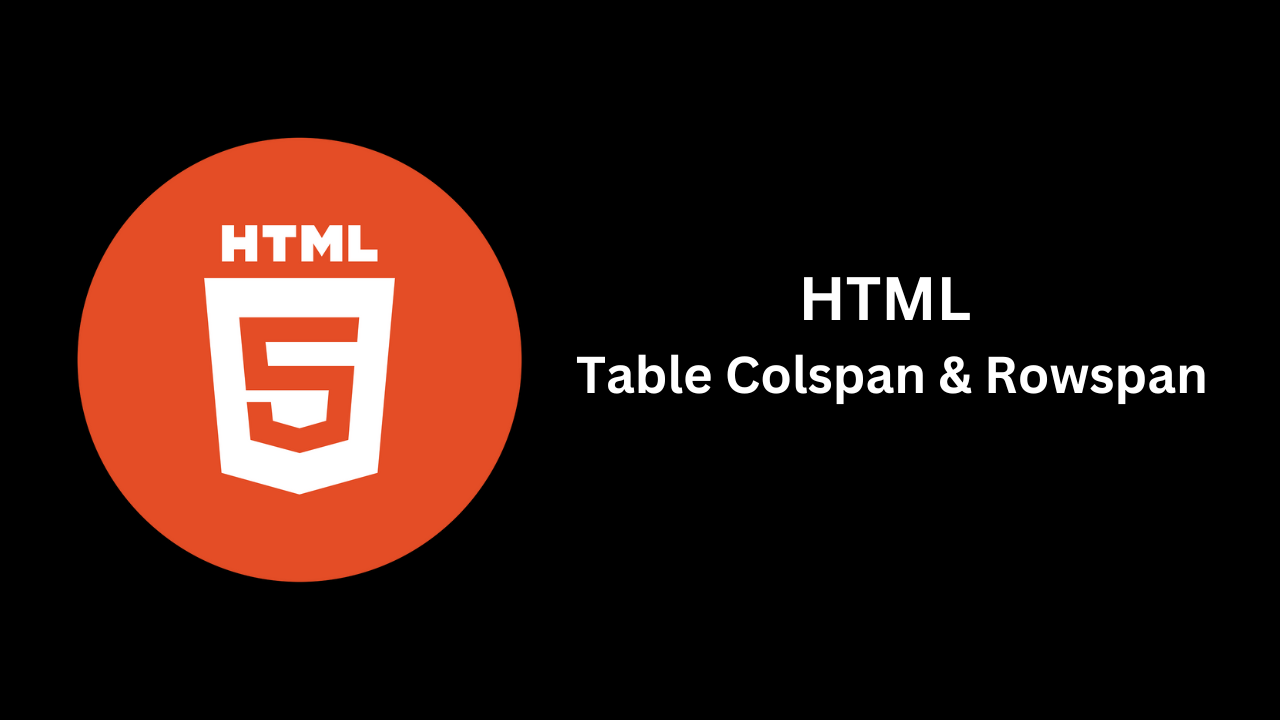Understanding Colspan and Rowspan in HTML Tables
 Shivani Patel
Shivani Patel
HTML tables are a powerful way to organize and present data on the web. Among their many features, colspan and rowspan are essential attributes that allow you to create more complex layouts by merging cells. In this blog post, we’ll explore what colspan and rowspan are, how to use them, and best practices for effective table design.
What are Colspan and Rowspan?
Colspan allows a table cell to span multiple columns. It’s useful when you want to combine several adjacent columns into a single cell, often for headers or grouped data.
Rowspan allows a table cell to span multiple rows. This is helpful when you want to merge several rows into one cell, often to indicate a category that applies to multiple entries.
Basic Syntax
Both attributes are used within the <td> or <th> elements. Here’s how they look in HTML:
<td colspan="2">This cell spans 2 columns</td>
<td rowspan="3">This cell spans 3 rows</td>
Examples of Colspan and Rowspan
Let’s take a look at a few examples to illustrate how colspan and rowspan can be used effectively.
Example 1: Using Colspan
Imagine you have a table showing a class schedule. If you want a header that spans multiple days, you can use colspan.
<table border="1">
<tr>
<th colspan="3">Weekly Class Schedule</th>
</tr>
<tr>
<th>Monday</th>
<th>Wednesday</th>
<th>Friday</th>
</tr>
<tr>
<td>Math</td>
<td>Science</td>
<td>English</td>
</tr>
</table>
In this example, the header "Weekly Class Schedule" spans three columns.
Example 2: Using Rowspan
Now, let’s say you want to represent a simple tournament schedule where a team plays multiple matches:
<table border="1">
<tr>
<th>Team</th>
<th>Match</th>
</tr>
<tr>
<td rowspan="2">Team A</td>
<td>Match 1</td>
</tr>
<tr>
<td>Match 2</td>
</tr>
<tr>
<td>Team B</td>
<td>Match 1</td>
</tr>
</table>
Here, "Team A" spans two rows, indicating that the team is playing two matches.
Combining Colspan and Rowspan
You can also combine colspan and rowspan in a single table for more complex designs. Here’s a more intricate example:
<table border="1">
<tr>
<th rowspan="2">Item</th>
<th colspan="2">Details</th>
</tr>
<tr>
<th>Price</th>
<th>Quantity</th>
</tr>
<tr>
<td>Apples</td>
<td>$1.00</td>
<td>10</td>
</tr>
<tr>
<td>Bananas</td>
<td>$0.50</td>
<td>20</td>
</tr>
</table>
In this table, "Details" spans two columns, while "Item" spans two rows.
Best Practices for Using Colspan and Rowspan
Keep it Simple: Avoid excessive use of colspan and rowspan as it can make the table harder to read and maintain.
Logical Structure: Ensure that the table structure remains logical and clear. Merging cells should enhance clarity, not confuse users.
Accessibility: Use captions and headers effectively to make sure screen readers can interpret the table correctly. Consider adding ARIA roles if necessary.
Consistent Layout: Make sure that your colspan and rowspan are consistent throughout the table to avoid visual confusion.
Conclusion
Colspan and rowspan are powerful attributes that can help you create more complex and informative HTML tables. By understanding how to use these attributes effectively, you can enhance the presentation of your data and improve user experience. Whether you’re building a simple class schedule or a detailed data report, mastering these features will take your web design skills to the next level. Happy coding!
Subscribe to my newsletter
Read articles from Shivani Patel directly inside your inbox. Subscribe to the newsletter, and don't miss out.
Written by
